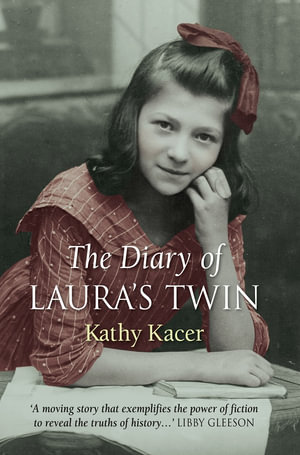The diary of Laura's twin by Kathy Kacer

Allen and Unwin, 2009. ISBN 9781741756678
(Age: 11-14) Although many books have highlighted the trauma of the
Warsaw Ghetto during the Holocaust, the 1941 diary entries of Sara
Gittler balance the expectations of present day twelve year old Laura
Wyman. Laura complains that collecting $1000 door to door for the
African Well Fund should show her commitment to her impending Bat
Mitzvah. Plagued by friends quoting Beatles' lyrics, a steady stream of
school assignments, and ninth grader bullies, Laura is not impressed
when her Rabbi suggests that she contact the elderly Mrs
Mendelcorn. After all, she has already read 'The Diary of Anne
Frank' and feels she already knows a lot about the Holocaust.
Young Sara's diary entries are immediate, descriptive and
compelling. She mourns her loss of school, books, medicine,
personal freedom and fresh food. The distinction between the lives of
these two young girls is exemplified in the story of Sara's friend
Deena, who treasures the few coloured pencils and scraps of paper that
she has been able keep. David, Sara's fourteen year old brother is more
aware of the outside world and his involvement in underground
activities adds a sense of hope in this desperate life. He scrounges
bread, risking his own life.
By late 1942, the diary includes disturbing examples of starvation and
brutality. In parallel, Laura's ordered world is provoked by vandals
desecrating a local cemetery. Laura learns the power of honesty and the
strength of standing up for personal beliefs.
The black and white photos interspersed throughout add a sense of
realism to this disturbing tale. The inclusion of real individuals
(Janusz Korczak, the teacher who supplied hope to orphans, teenage
Mordechai Anielewicz and other Resistance fighters), adds power to
narrative. But most compelling is the realisation that war affects more
than soldiers.
It would be interesting to compare this to Yellow Star by
Jennifer Roy.
I found The Diary of Laura's twin more believable than the
approach in
Yolen's The Devil's Arithmetic and more accessible to
adolescents (but
less academic) than John Boyne's Boy in Striped Pajamas.
Pauline Crawford